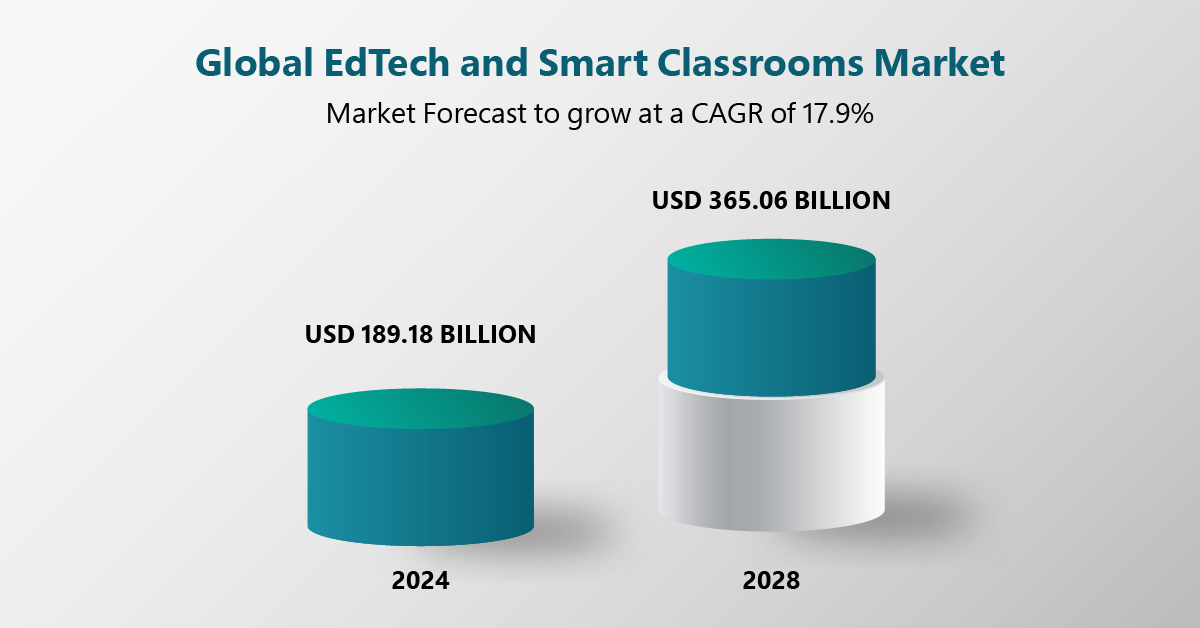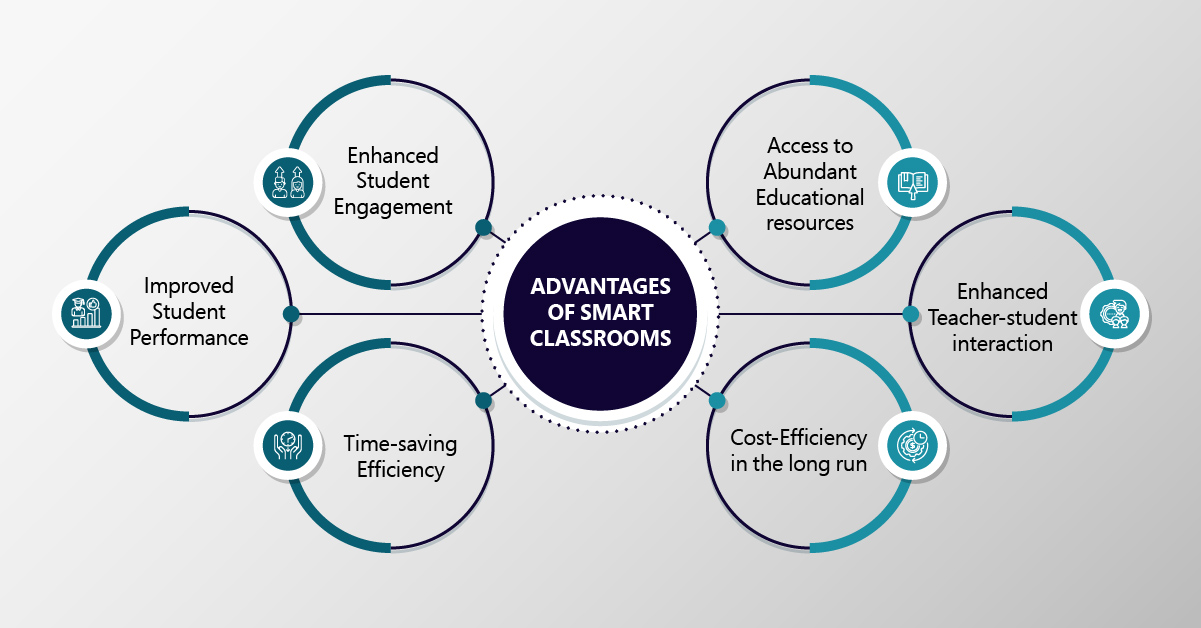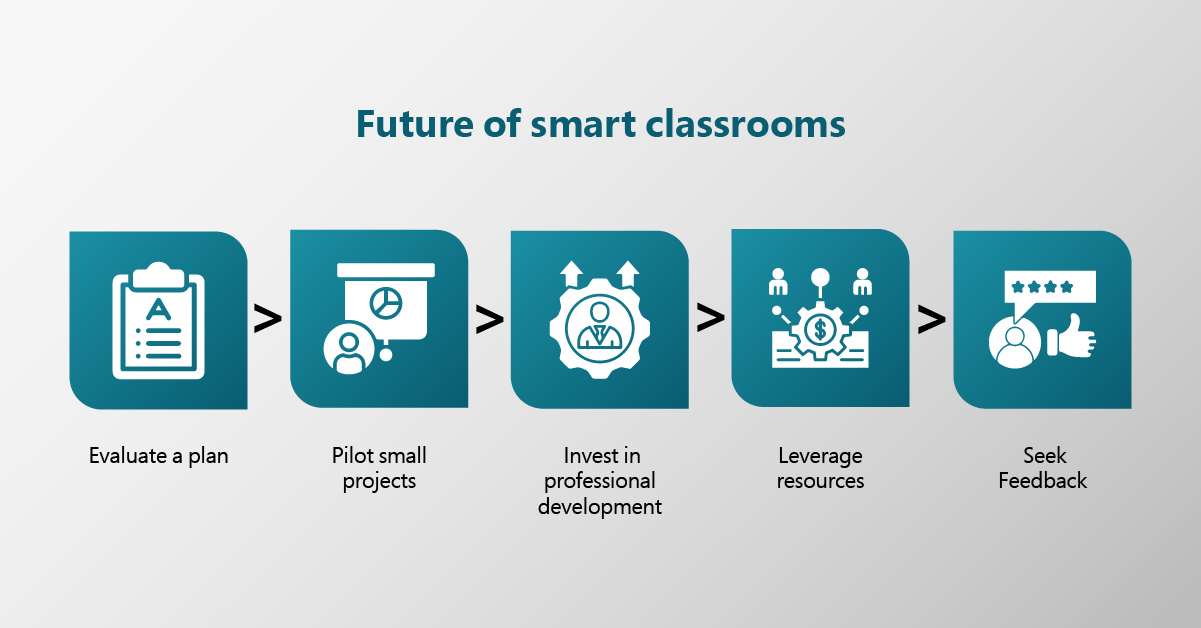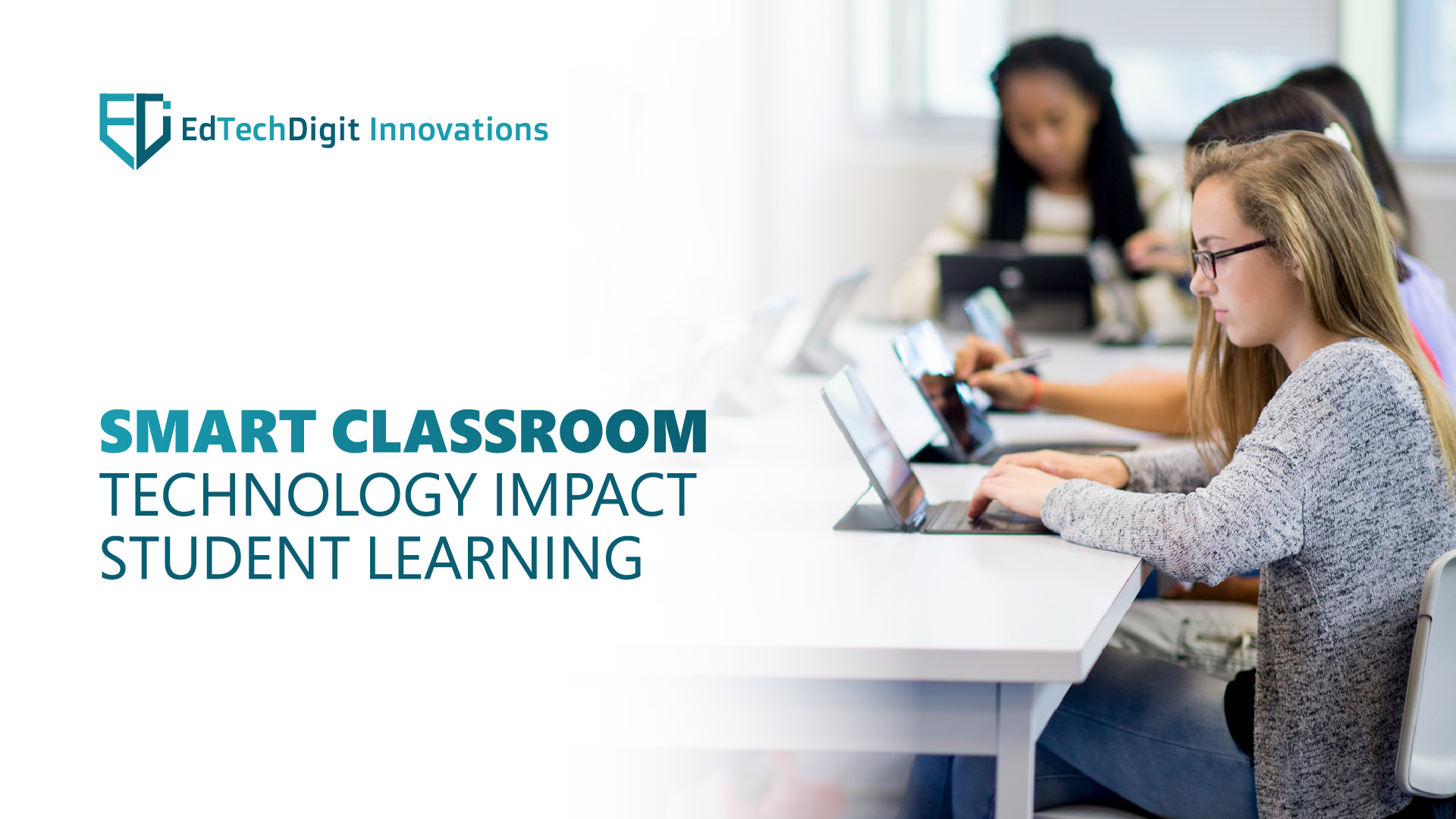Artificial Intelligence has grown beyond its bounds and has impacted the education sector far and wide. Across the global industry operations, smart classroom technologies have evolved visibly to astounding heights. The education technologies that are deployed today have a range beyond massive numbers that are streamed to boom in the future as well.
Looking at the representation below by Research and Markets, it is expected that the global edtech and smart classrooms market will grow at a CAGR of 17.9% reaching a whopping 365.06 billion market size by 2028. This is a sheer upgrade that the education industry, specifically K-12 education.

Attending to the urgent needs of the evolving education industry, artificially intelligent resources have ramped up the teaching-learning procedures manifold. The evolving digital landscape has given way to smart classroom technologies acting as a powerful tool to enhance the overall learning experience. With an array of eLearning tools and software available; educators and learners are being benefitted big time. Read on as we unfold the massively critical role these smart educational technologies have in improving teaching-learning pedagogies in the future.
About Smart Classroom Technologies:
A smart classroom is a digital classroom which is an advanced form of a school that follows diverse ways of teaching to improve efficiency. The sheer goal of deploying such smart technologies in education is to create an enhanced, interactive, efficient, and data-driven learning environment. This fosters a healthy classroom system where the students are keen on learning newer ways of gaining and performing knowledge. Digital boards, audio-visual equipment, audience response technology, assistive listening devices, networking, and smart software applications are a great addition to smart classroom technology norms.
3 Types of Smart Classrooms:
- Standard Smart Classroom
It is a teacher-led learning space equipped with foundational technology, inclusive of a computer, interactive whiteboard, and projector.
- Intermediate Smart Classroom
This setup includes the same requisites as that of a standard classroom and adds up extra momentum with digital podiums, laptops, and other digital devices.
- Student-led Smart Classroom
A fully integrated smart classroom where each student has personal devices and access to a range of educational technology, including virtual reality headsets, wearables, tablets, and laptops.
Benefits of Smart Classrooms in Education:

The tech-advanced classrooms with ever-nuanced technological gadgets assisting enhanced learning are what make teaching-learning more fun and lasting. These advantages listed above are a clear indication of the plethora of benefits that teachers and learners are ushered with; while deploying smart educational technologies. These foster collaboration, creativity, and innovation among the learners across K-12 grade levels. These smart classroom technologies in education make it easier for learners to grasp complex ideas and ensure easy adaptability of learners as per their learning curve.
Smart Classroom Tools for Learners:
- Coding platforms and applications
Enable learners to master coding, programming, and computational thinking; fostering problem-solving and analytical abilities
- Project-based learning tools
Emphasize cooperation and creative problem-solving skills
- Simulation software and virtual reality
Offers immersive experiences in diversified disciplines; enhancing students’ conceptual understanding and engagement with diverse concepts
- Robotics and engineering tools
Designing and building robots and engineering projects assist in developing hands-on capabilities in learners with creativity and persistence
- Creative tools
Platforms for expressing ideas through digital art, design, and storytelling stimulate imagination and encourage a critical bend of mind in the learners
Barriers to Smart Class Tech Adoption:
- Infrastructure preparedness
- Lack of internet connectivity, network stability, and hardware challenges
- Schools must ensure they possess the requisite infrastructure to support smart classroom equipment
- Teacher Training and Familiarity
- Teachers and facilitators need to learn ways to operate smart classroom technology
- Partner with EdTech providers to assist in setup, support, and effective training
- Financial investment
- Implement a digital smart classroom solution requires significant financial investment
- Look at the long-term benefits and impact of the investment
- Time and effort
- Integrate a digital smart classroom solution takes time and effort
- Privacy and security concerns
- Address privacy and security concerns
- Choose a solution that integrates well with the existing infrastructure and learning management systems
5 Practical Steps to Integrate Smart Classroom Technologies:
- Assess and upgrade infrastructure to support new classroom technologies in education
- Select smart technology solutions based on educational needs and scalability
- Invest in comprehensive and qualitative teacher training programs
- Prioritize compatibility with existing systems for smooth integration
- Foster a community if educators share best practices and experiences
- Ensure student privacy and data accuracy
Future of Smart Classrooms:

Legible utilization of Smart classroom technologies is the way ahead! When implemented thoughtfully, these can amplify the overall educational experience. The evolution from a traditional to a smart classroom is an ever-evolving process; that involves continuous upgrades and ongoing learning. Making a massive evolution possible in the way teachers and learners envision learning today is indispensable. Master the nuanced ways of deploying the best educational technology across learners with the latest technology in the nucleus.

